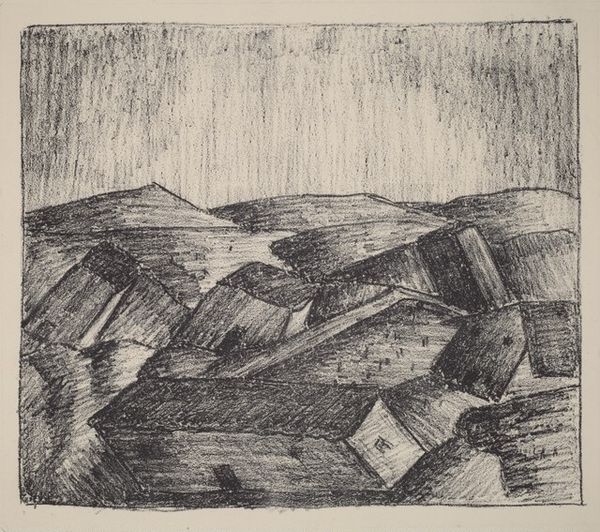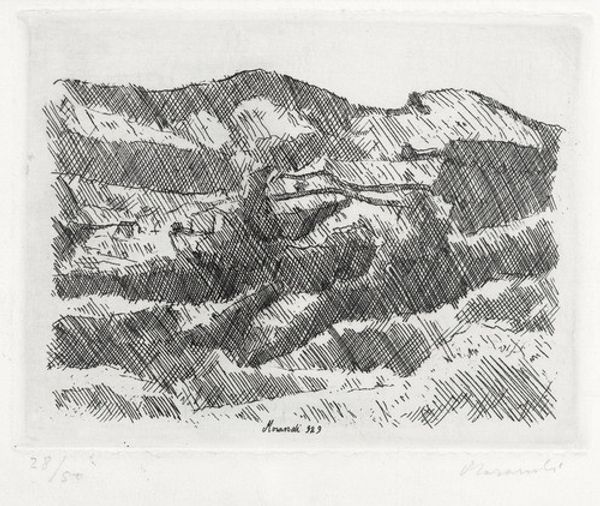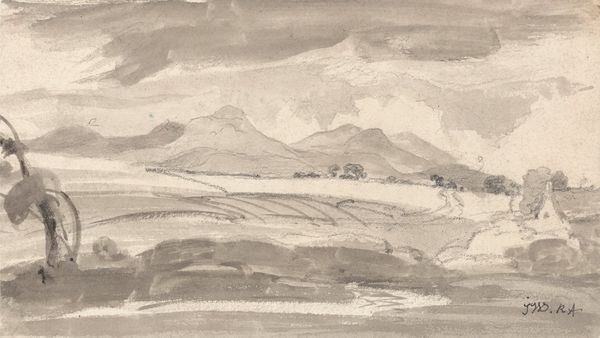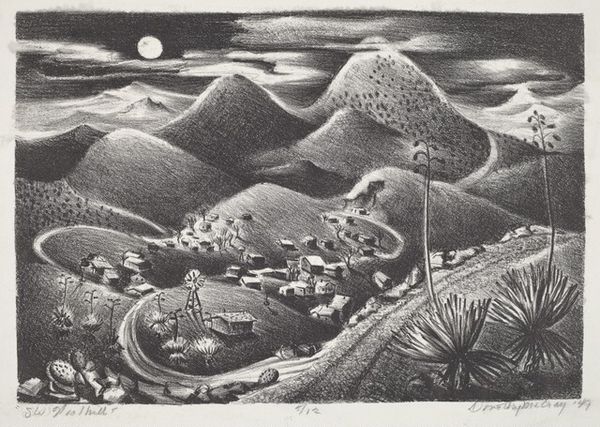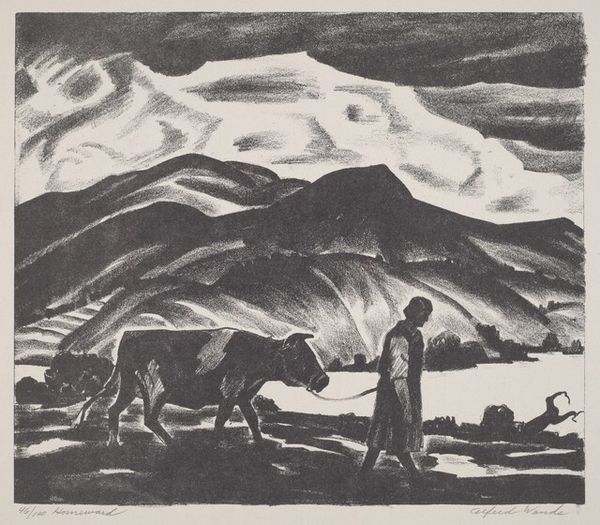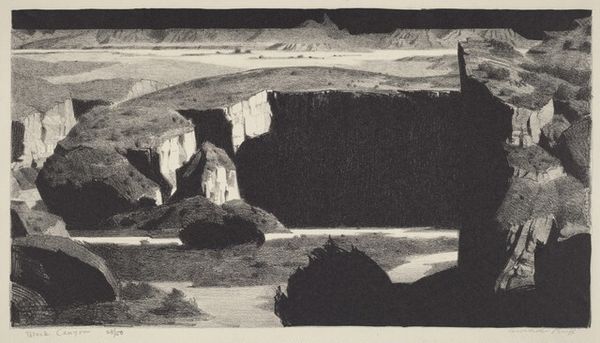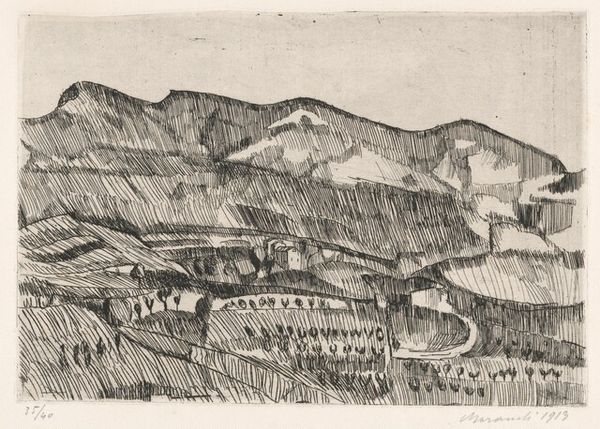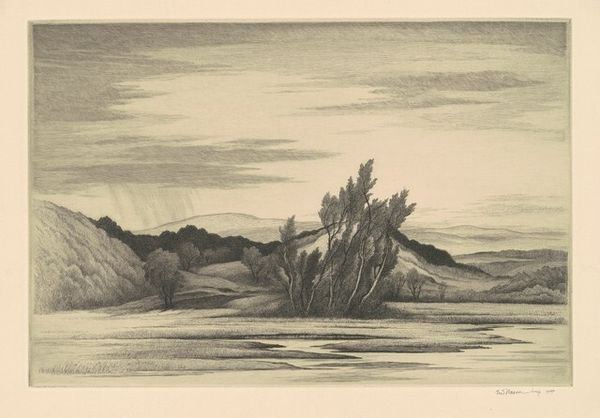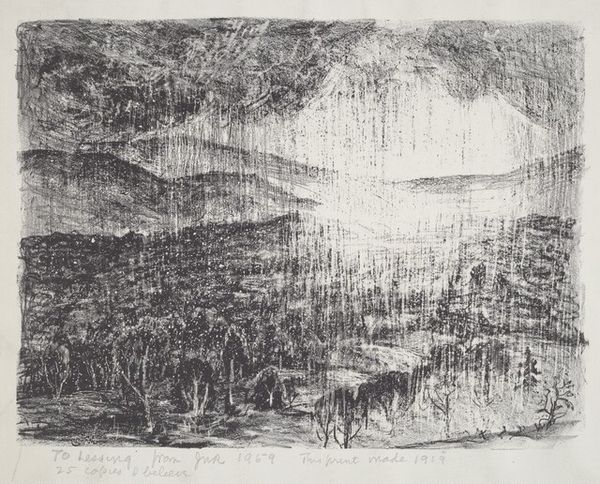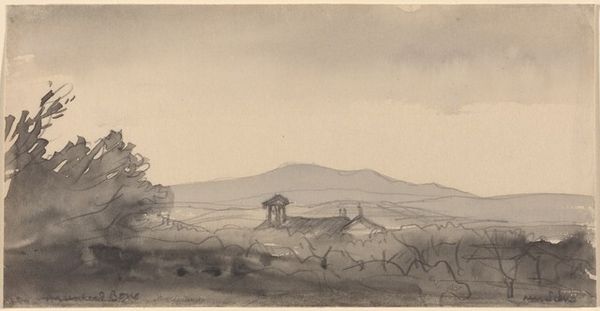
drawing, print, pencil
#
drawing
# print
#
landscape
#
pencil drawing
#
pencil
#
realism
Dimensions: image: 237 x 384 mm sheet: 329 x 457 mm
Copyright: National Gallery of Art: CC0 1.0
Curator: What strikes you first about this drawing, Untitled (Windmill Mesa), created in 1939 by Otis Dozier? Editor: The heavy sky, definitely. It feels charged, almost oppressive. And the light is so stark, the way it hits the mesa. It creates a very dramatic composition, don't you think? Curator: It does. Let’s consider Dozier's material choices. This is a pencil drawing, possibly a print. The mass-produced nature of prints makes it accessible and relates to the representation of common landscapes like this one. His choice connects the depiction of this mesa, of this working infrastructure, with an ethos of broad accessibility and distribution of artworks. Editor: Yes, but notice the precision. The intricate detail in the windmill, for example. There's a deliberate structural integrity at play here. And look how the horizon line cuts through the center, establishing a clear visual hierarchy between earth and sky, between the tangible and the atmospheric. It speaks to the stability of form in a rapidly changing world. Curator: Indeed. This area, likely somewhere in the Dust Bowl, was in crisis at this point. Dozier’s landscapes capture a sense of resilience but also vulnerability—highlighting that even rural communities were rapidly industrialized, with wind power harnessed as a vital resource. The artist here mediates between pastoral tradition and technological modernity. Editor: See, the windmill against the mesa - it functions almost as a sign, an icon of survival and ingenuity, sharply defined against a more abstract, almost expressionistic sky. It's not just about what's depicted, but *how* it's depicted: the formal relationships that convey so much emotion. Curator: Perhaps the social context has led him to select such a scene. Consider how a lone farm persists under potentially volatile weather patterns and challenging environmental issues; Dozier comments directly on issues surrounding the economy of agriculture and production as well as challenges that impact materiality itself! Editor: Perhaps you are right. Dozier gives us so much to analyze here. I might never have known there were so many facets embedded in what appeared to me initially to be a straightforward drawing of land with an expressive sky.
Comments
No comments
Be the first to comment and join the conversation on the ultimate creative platform.


